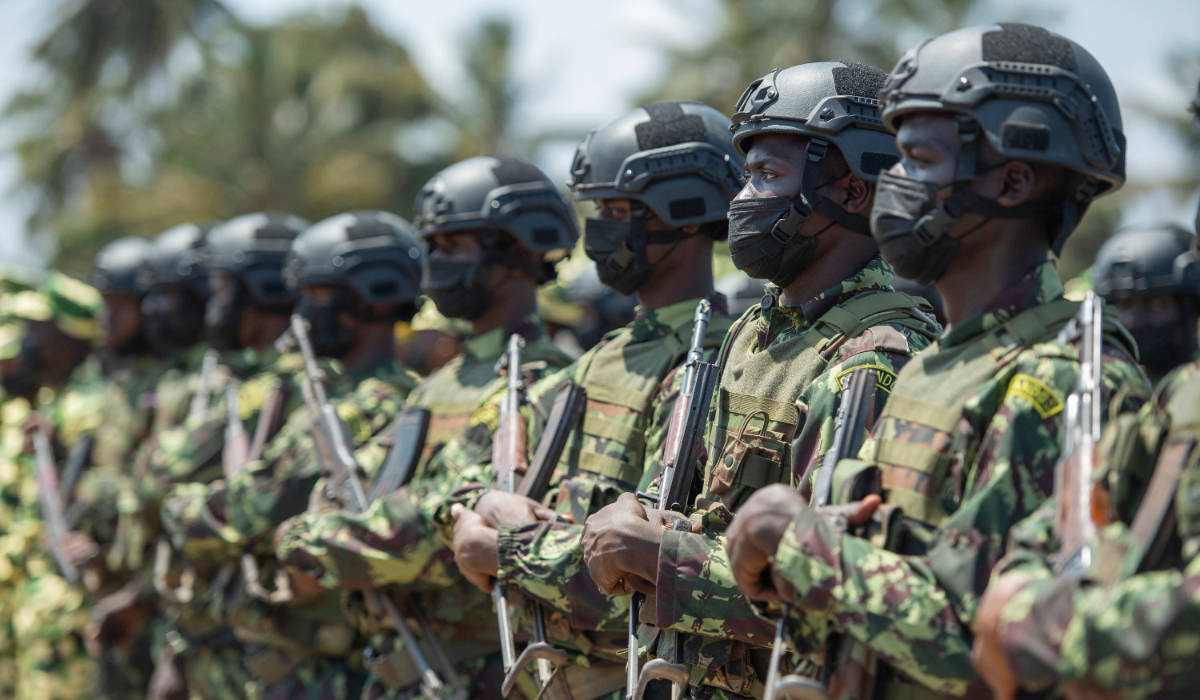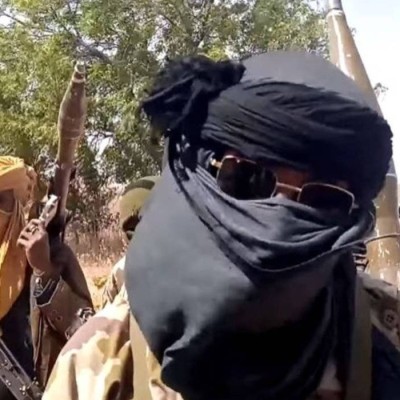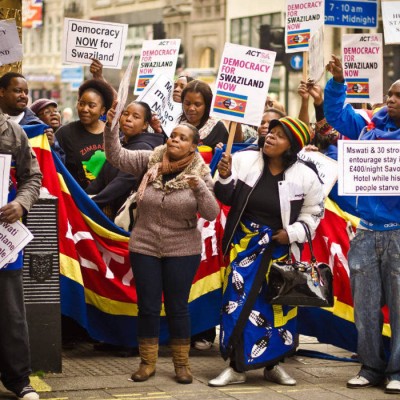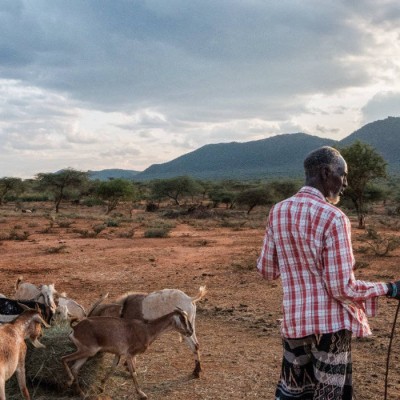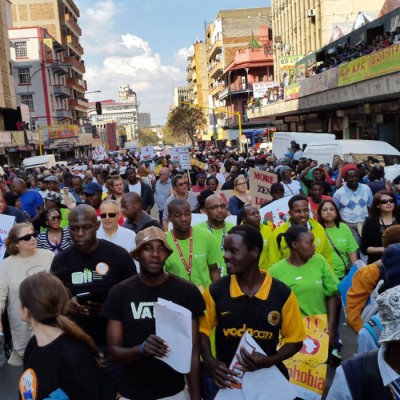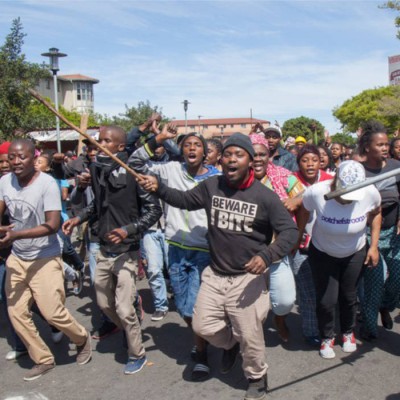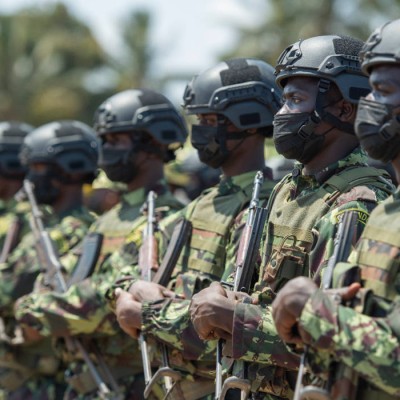Introduction
Compared to other regions, Southern Africa has been considered peaceful for a period of time. The relative peace experienced in the region has partly been attributed to the late decolonisation experience and the existence of strong regional institutions, such as the Southern Africa Development Community (SADC), that have midwifed and quelled potential threats to peace and security. Certainly, SADC has established and operationalised peace and security organs that strategically intervene in cases of destabilisation in the region,1In May 2023, the SADC Special Summit endorsed the deployment of forces to Eastern Democratic Republic of Congo (DRC) to restore peace and security. including militarily in some countries. For instance, military forces under the ambit of SADC were deployed in the Democratic Republic of the Congo (DRC) and Lesotho. More recently, forces were deployed by the region to quell the insurgency in Cabo Delgado in Mozambique.2Bebington, Katharine (2022) ‘The role of SADC in Eswatini: Lessons from Lesotho’, ACCORD, Available at: <https://www.accord.org.za/analysis/the-role-of-sadc-in-eswatini-lessons-from-lesotho> [Accessed: 28th April 2023]. SADC has also intervened in member states to assuage political crises, as recently experienced in Eswatini where the SADC Troika was seized with this matter. Suffice it to mention that while the SADC intervention in Eswatini prevented the situation from escalating further, the root causes of political tensions remain salient.
Despite the efforts outlined above, the emergence of conflict, violent demonstrations and riots experienced in some countries in this region, including Zimbabwe (2013, 2018), Zambia (2016), Eswatini (2021) and Madagascar (2020/2022), coupled with the evolving peace and security threats, such as armed insurgency, governance deficit, economic downturn, vagaries of climate change and the lack of economic development, have triggered an academic and policy appetite on the nature and efficacy of Infrastructure for Peace (I4P) in the region. Secondly, discussions on the subject area have predominantly focused on security apparatus, with little attention to other non-state-centric I4P. This article, therefore, interrogates the status of I4P within the Southern African region. Specifically, it unpacks their characteristics and roles in peace building, conflict prevention, conflict management, community cohesion and integration. The article goes further to highlight the challenges that I4P face in executing their respective mandates.
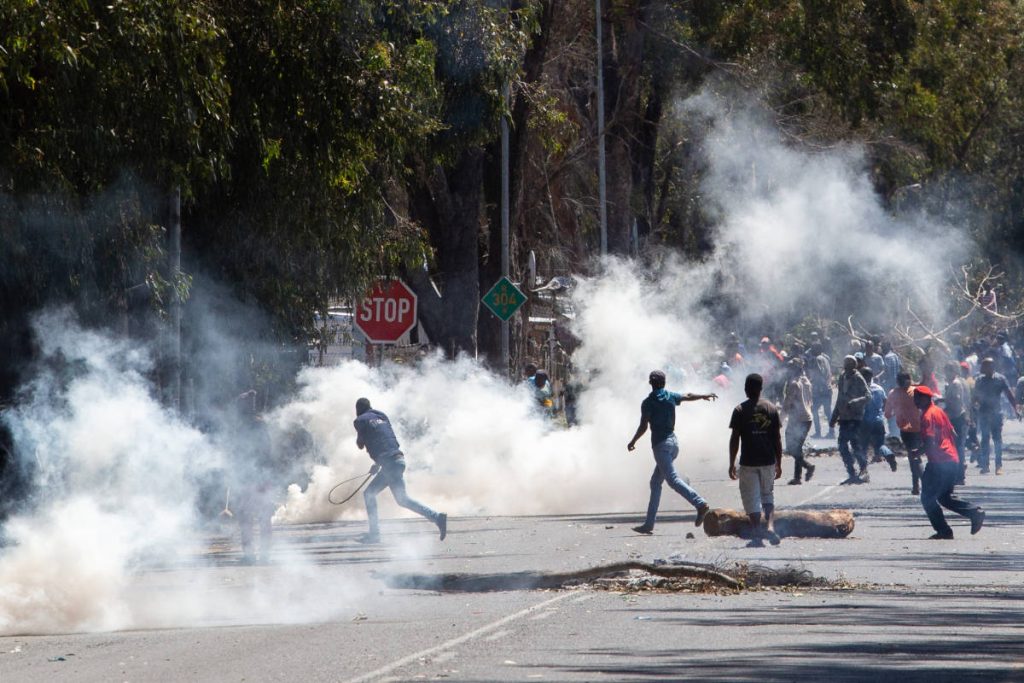
Photo: Ashraf Hendricks/GroundUp
Understanding Infrastructure for Peace (I4P)
The concept of infrastructure for peace started emerging in the 1980s.3Lederach, John Paul (2012) ‘The Origins and Evolution of Infrastructures for Peace’, Journal of Peacebuilding and Development, 7(3), 8–13. The emergence was given impetus by the desire to establish frameworks to address the social, political and cultural aspects at the centre of conflicts in communities in the short and long term. With time, the concept has found its niche in the Humanitarian Development and Peace (HDPN) Triple Nexus and Conflict-Sensitivity Approaches. In essence, I4P has become integral to planning and development in many societies. At the regional level, it is considered a plinth for regional integration agenda.
What is I4P? The United Nations Development Programme (UNDP) defines I4P as a set of interdependent systems, resources, values and skills that are at the disposal of governments, civil society organisations (CSOs) and community-based institutions that seek to promote dialogue, community engagement, prevent conflict and enable peaceful mediation when violence occurs.4UNDP (2013) ‘Issue Brief: Infrastructure for Peace’, Available at: <https://www.un.org/en/land-natural-resources-conflict/pdfs/Issue_brief_infrastructure_for_peace.pdf> [Accessed: 2nd May 2023]. Van Togeren5Van Tongeren, Paul (2011) ‘Increasing interest in infrastructures for peace’, Journal of Conflictology, 2(2), 45–55. understands I4P as structures or mechanisms established by various actors and stakeholders to prevent and resolve conflicts at multiple levels – global, regional, national and local. What is apparent from the above conceptualisation is that I4P is meant to promote peaceful coexistence and community cohesion. In other words, they are architecture for peace geared towards creating human interaction and engagement in a more sustainable manner. Therefore, I4P entails institutions and mechanisms established to promote peace and societal cohesion. It includes peace commissions, peace committees (both national and local), ministries of peace, early-warning infrastructure, and councils of elders, among others.

Photo: Alexgrec
Context and Relevance of I4P in Southern Africa
The contextual factors that underpin the relevance of I4P in the Southern Africa region include intermittent instabilities and structurally embedded vulnerabilities (political, economic and social) reported in the region. A cursory review of the 2021–2023 Armed Conflict Location and Event Data (ACLED), for example, indicates that the region continues to experience instability and fragility challenges. Specifically, poor governance, maladministration characterised by institutionalised corruption, and the struggle for control of power by the political elite remain key conflict drivers. In the economic realm, the struggle for ownership, management and control of natural resources and the unequal distribution of these resources are major factors that drive fragility and undermine the resilience of the Southern African region. On the social front, the inadequate capacity to manage diversity, real or perceived inequality and discrimination against minorities, marginalisation along ethnic contours, as well as the alienation and consequent disillusionment of youths, further contribute to prevailing vulnerabilities.
The above vulnerabilities have tested the institutional resilience of national, local and regional I4P and exacerbated existing security, infrastructural and political challenges. Against this background, it is evident that:
- Conflict and fragility challenges are on the rise and becoming complex across the Southern Africa region, and thus there is the need to reimagine I4P.
- The key driving factors of conflict (KDF-C) are largely structural in nature, and thus there is a need to tailor responses on building resilience and addressing the root causes.
- Efforts to deal with the emerging threats are fragmented and, therefore, have limited impact.
- I4Ps in the region are in varying stages of evolution and formation and their capacity is limited. The lack of technical capacity and resources causes I4Ps to function sub-optimally, resulting in lost opportunities for sustainable peacebuilding and social cohesion.
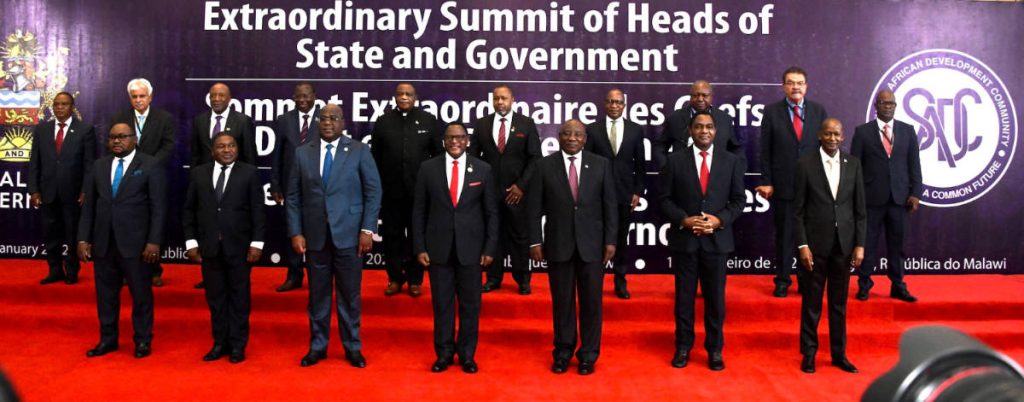
Photo: GCIS
Further factors that underpin the relevance of I4P in the region have to do with the complex and contrasted dynamics of democratic developments across the region, with some positive trends and isolated cases of regression. The isolated cases have presented critical risks of political and electoral violence, a rise in insurgencies, displacement, climate-related skirmishes and conflicts in Southern Africa. These dynamics call for a refocus and a retooling of the national and regional I4P in countries at risk or in varying stages of development and transition. This point was reiterated at the Extraordinary Summit of SADC Heads of State and Government in January 2022, the Extraordinary Troika Summit of SADC Heads of State and Government in July 2022, the 35th ordinary session of the African Union (AU) Assembly, the High-Level Reflection Forum on Unconstitutional Changes of Government in Africa in March 2022, and the Malabo Summit on Terrorism in May 2022.6See Communiqué of the Extraordinary Summit of Heads of State and Government of the SADC, Malawi, 12 January 2022, at: <https://www.sadc.int/latest-news/communique-extraordinary-summit-heads-state-and-government-southern-african-development; Communiqué of the the Extraordinary Troika Summit of Heads of State and Government of SADC, Malawi, 14 July 2022, at: <https://www.sadc.int/latest-news/communique-extra-ordinary-sadc-troika-summit-plus-chairperson-organ>; Communiqué of the Declaration on Unconstitutional Changes of Government in Africa, Ghana, 17 March 2022, at: <https://www.peaceau.org/uploads/eng-declaration-on-unconstitutional-changes-of-government-in-africa-15-17-march-2022.pdf>; and Communiqué of the Declaration on Terrorism and Unconstitutional Changes of Government in Africa: Robust Response, Deepening Democracy and Collective Security, Equatorial Guinea, 28 May 2022, at: <https://papsrepository.africaunion.org/bitstream/handle/123456789/1664/Declaration%20on%20Terrorism%20and%20UCG%20-%20EN.pdf?sequence=6&isAllowed=y>. The opportunities that I4P presents must be harnessed and mined for meaningful conflict prevention, mitigation and resolution. Against this background, the article will now discuss the characteristics and efficacy of I4P in Southern Africa.
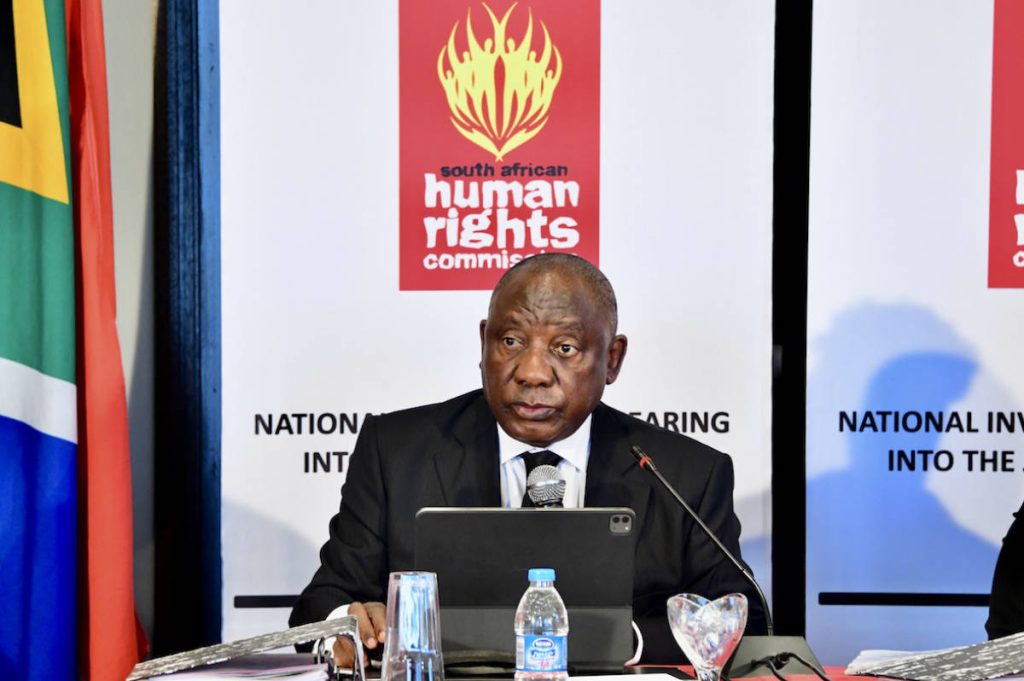
Photo: GCIS
Characteristics of Infrastructures for Peace (I4P) in Southern Africa
A 2022 mapping that assessed the functionality and effectiveness of I4P in the Southern African region identified different types of infrastructures. Based on the findings, the I4P are classified into two broad categories namely, state-centric I4P and non-state centric I4P. State-centric I4P are mechanisms or frameworks being operationalised by government-related institutions with a direct mandate, responsibility and accountability to government or public officials. In most cases, they are manned by government security apparatus. However, a few are quasi-governmental in nature and are established through legislation. State and quasi-government I4Ps are, in most cases, financed by the national treasury and are accountable to the public. In some cases, their budgets are supplemented by grants from cooperating partners and donors. The most prominent types of I4P under this category include Conflict Management Committees (CMCs) under the auspices of Electoral Management Bodies (EMBs) in SADC countries, Human Rights Commissions (HRCs), Peace and Reconciliation Commissions, and National Peace Architectures (NPAs) that are established and operate through a national peace policy framework and housed within a government coordinating agency, such as the Cabinet Office of the Presidency, as is the case in Malawi. On the other hand, non-state-centric I4P are independent architectures established by CSOs, faith-based organisations (FBOs), media organisations, and traditional peacebuilding mechanisms. These often draw their funding from private and public donor organisations. The focus of their work is mainly in the area of peacebuilding, social cohesion, humanitarian affairs, democracy and human rights. They are, in most cases, established at the grassroots level.
Notwithstanding the categorisation above, it is apparent that I4P in the Southern Africa region have unique features. With the exception of Zambia and Malawi, for instance, which have well-functioning CMCs, most of the EMBs in the region do not have well-structured and functional electoral conflict management architectures. The mandate of EMBs in countries such as Botswana, Namibia and others is strictly focused on managing elections, without a strong focus on conflict management. It can be argued that Malawi is the only country in the region with an elaborate national peace architecture and a succinct national peace policy with a clear mandate and role in peacebuilding and community cohesion. Malawi’s I4P is well-structured and well-networked and brings together both state and non-state actors into the peace architecture. Unlike in the other countries in the region, Malawi’s I4P is supported by policy and legal frameworks. While Tanzania has also initiated a national peace architecture, it is not yet adopted and operationalised. With the exception of Eswatini, Mauritius, Seychelles, South Africa, Tanzania, Zambia and Malawi, other countries in the region do not have independent human rights commissions that can be categorised as I4P.
Some countries in the region have a dualist law approach to I4P, which impacts how they are structured and function. For instance, in the case of Eswatini, there are I4P under the discretion of the King, while others are managed under Roman Dutch Law. I4P in the region have also been characterised by limited jurisdiction and autonomy. In Angola, for example, the EMB shares some of its core responsibilities with a government ministry. This, in essence, impacts the EMBs ability to execute its peacebuilding functions. Furthermore, the government retains control of other key I4P, i.e., the Commission for Reconciliation in Memory of Victims of Political Conflicts is largely under the control of the government, specifically in regards to appointments of commissioners and budgetary appropriation. The Angolan government also has a unique model that entails hiring CSO-oriented I4P to implement peacebuilding initiatives on its behalf. Another outstanding characteristic is the prominence given to the traditional I4Ps in the region. Zambia, Malawi, Eswatini, Angola, Botswana, South Africa and Lesotho, for instance, have well-established traditional I4P that play an important role in peacebuilding and community cohesion. In Zambia and Botswana, the House of Chiefs has been institutionalised and plays a cardinal role in peacebuilding at both national and community levels.
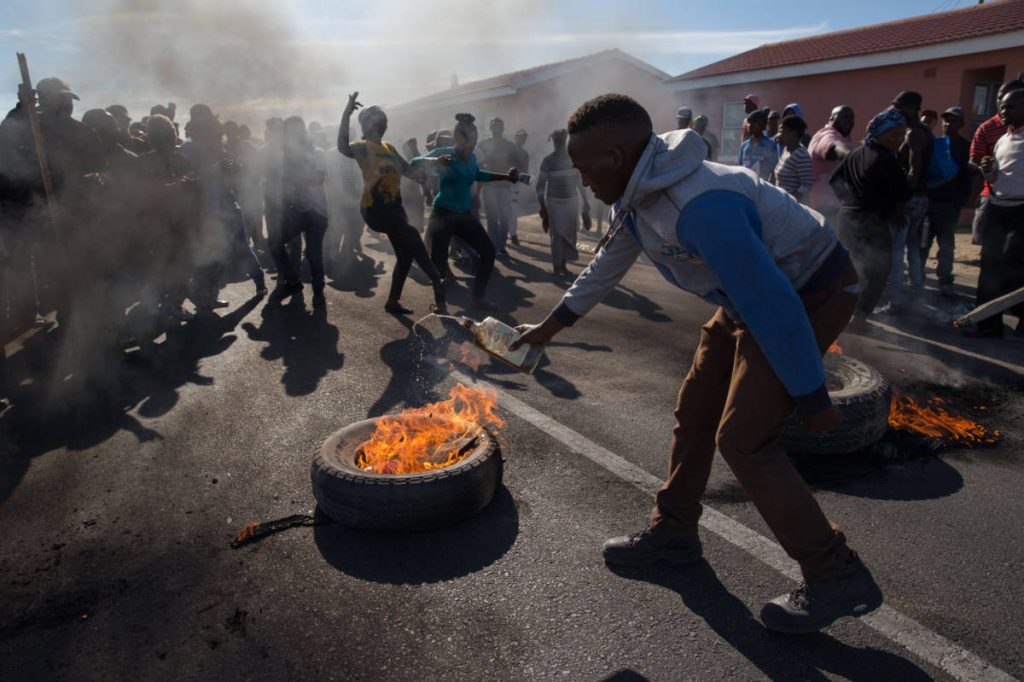
Photo: Ashraf Hendricks/GroundUp
Efficacy of I4P in Southern Africa
As alluded to above, I4Ps have been established at various levels by state and non-state actors to address drivers of conflict and support resilience building in the region. There is consensus among scholars and practitioners that I4P remains critical in addressing drivers of conflict and fragility and contributing towards conflict prevention and resilience building. The contextual factors discussed above clearly demonstrate and underscore the significance of establishing and operationalising effective I4P in the region. However, their impact has not achieved significant traction, given the intermittent conflicts being experienced and recorded in the region. Resultantly, the potential for conflict and instability remains persistent as the Southern Africa region continues to face structural challenges that expose the region to shocks, such as communal crises and civil unrest, political violence, electoral and resource-based conflicts, border disputes, insurgencies, violent extremism, cybercrimes and insecurity, illicit financial flows, human trafficking, drug trafficking, forced displacement of populations, and pandemics such as Covid-19. Some of the crises experienced in Mozambique and DRC are significant and have deep-rooted causes that require strategic multipronged interventions at both regional and national level. This article makes clear the existence of a number of factors affecting the efficacy of I4P, undermining resilience-building efforts, and compounding the conflict and vulnerability situation of the region. These are outlined as follows:
- Poor institutional capacity of I4P in the region to carry out peacebuilding work effectively.
- Inadequate structured and institutionalised I4Ps: Apart from Malawi and South Africa, there is a lack of overarching national and institutionalised policy frameworks for operationalising strong, systematic and sustainable I4Ps in most Southern African countries. As a result, the fragmented approach to crisis and the absence of a common policy has hindered peacebuilding initiatives and worsened security imperatives in the region.
- Weak financial base: Most I4P identified in the region lack sustainability in their work due to insufficient funding and mostly rely on external funding that, in some cases, is ad hoc and limited.
- Fragmented resilience-building architecture: Government, CSO and community approaches towards operationalising I4P in the region have many limitations. First, a number of I4P are duplicated in countries and communities where multiple actors intervene. This is because, in most cases, effective collaboration within the peacebuilding architecture does not exist. Lack of coordination and networking among peacebuilding actors cannot promote efficient and effective operationalisation of I4P in the region. Second, despite vast knowledge and numerous analyses done by a number of different actors on the work of I4P in the region, they are not shared, and each actor intervenes independently. Thus, there is no momentum for joint programming and efficient use of resources. Third, resources from donors have been scattered across the region without prioritisation of geographic hot-spot areas where attention and impact are required.
- Limited focus and emphasis on preventive approaches: The approaches of most partners also pose challenges to operationalising I4P in the region because their focus is mostly on designing I4Ps geared towards the management of conflict triggers as opposed to those focused on preventive approaches (addressing root causes) as most drivers of conflict are structural in nature.
- Limited HDPN approaches: The multi-dimensional, complex and structural nature of conflict and fragility in the region require a comprehensive approach to addressing conflict drivers. Yet the I4P being operationalised in the region are not well equipped for long-term, integrated and multi-dimensional programming aimed at addressing the root or key driving factors of conflict through the HDPN approaches. This form of designing and operationalising I4P cannot lead to effective peacebuilding outcomes.
- Inadequate conflict sensitivity: Lack of effective mainstreaming of conflict sensitivity in the design and operationalisation of I4P often leads to ill-designed programmes and negative outcomes. Conflict sensitivity should be critical and intrinsic to the design and operationalisation of sustainable I4P. Hence, mainstreaming conflict sensitivity should not be narrowly viewed as the process of consulting beneficiaries on what activities are more suitable for their communities, but rather on the need to develop instruments, tools, methodologies, standard operating procedures (SOPs), and internal organisational capacities for mainstreaming prevention and Do-No-Harm principles in I4P designs.
- Lack of ‘regional lens’ programming: The drivers of conflict are also regional in nature. Yet, most I4P in the region tend not to take a strong regional lens in addressing the conflict drivers. This should entail partners formulating and aligning peacebuilding engagements and strategies with existing regional opportunities and dynamics.
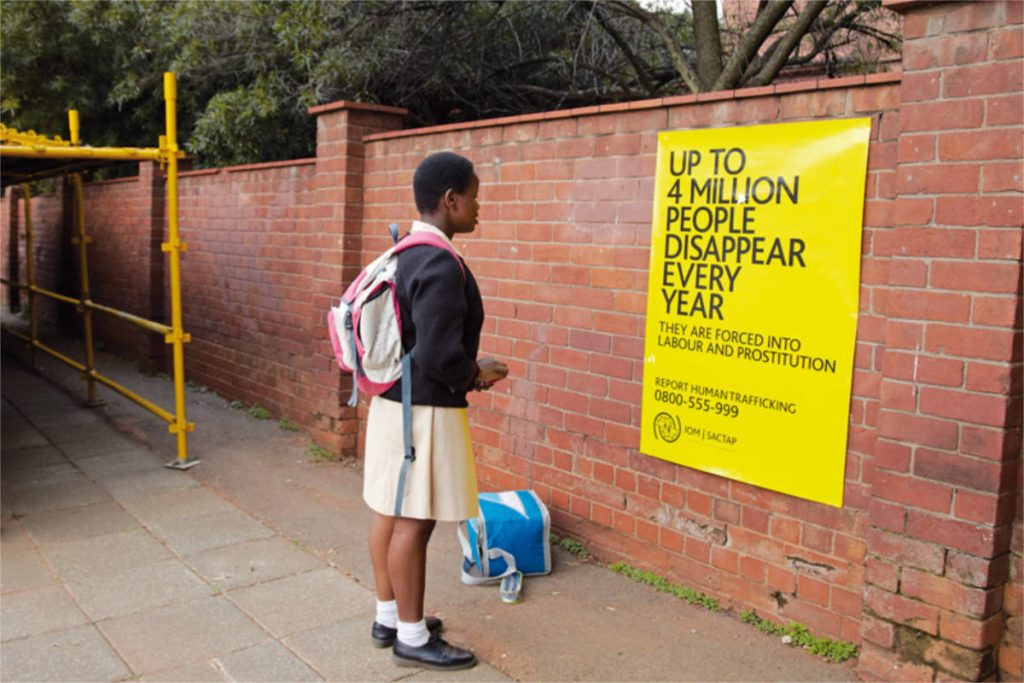
Photo: IOM | SACTAP
Conclusion and Recommendations
The paper concludes that I4P remain critical in addressing drivers of conflict and fragility as well as in resilience building in Southern Africa. The contextual factors discussed above also clearly demonstrate the importance of these I4Ps. To sustain and strengthen their work, the recommendations below are offered. These recommendations are valid actionable points for various stakeholders across the Southern Africa region.
- Apply conflict sensitivity programming and planning and consider more proactive application of conflict sensitivity in the design of I4P. Deeper understanding of historical and current conflict dynamics are important for the design of agile, effective and context-specific I4P.
- Actors should promote the triple nexus. Solutions to many of the drivers of conflict in the region require joint and collaborative responses from national governments, regional institutions, development partners and other stakeholders. The nexus approach to peacebuilding recognises that partners have their comparative advantages that need to be integrated to deliver more impactful interventions for vulnerable communities. Entrenching peacebuilding through the design of I4P anchored on triple HDPN remains key
- Stakeholders need to prioritise regional approaches in programming and planning. A regional integration lens to operationalising I4P and addressing drivers of conflict could expand the range of stakeholders, strengthen coordination within the peacebuilding architecture in the region and maximise impacts.
- Stakeholders need to provide adequate technical assistance to I4P in the region to design effective I4P and strengthen their operational capacities towards peace consolidation and comprehensive conflict prevention. Operationally, this could entail the following:
- Capacity building of I4P to enhance conflict prevention, early warning and early response capacities.
- Community security and resilience strategy: The focus of I4P interventions should be on supporting communities and member states to identify and address the drivers and causes of conflict. An approach that addresses the KDFs of conflict and peace (strategic conditions) is more sustainable in peace consolidation and comprehensive prevention. This can be done by identifying local actors and supporting local structures to strengthen and develop their capacities, acknowledging and enhancing their role as active actors in building sustainable local I4P.
- Social cohesion strategy: The focus of I4P interventions should be on strengthening the social fabric of communities by engaging them to identify cultural, social and economic connectors, so-called interdependencies, which foster cooperation and enable the strengthening of productive assets of the community.
- Actors should support member states in institutionalising, developing peace policies and operationalising National I4P coordination mechanisms. This will strengthen coordination among existing I4Ps at national and local levels to improve system-wide coherence and consistency and enhance efficiency. Various I4Ps exist in SADC countries, but often lack effective coordination resulting in ad hoc implementation of activities and reduced impact. Strengthening coordination mechanisms would improve systematic collaboration and inter-operability of activities among I4P in-country and across the region.
- Stakeholders should devise mechanisms and approaches to guarantee the sustainability of I4P. Operationally, this could entail building the capacity of I4P in resource mobilisation as well as establishing public-private partnerships for funding I4P.
Tunji Namaiko holds a PhD in Politics and International Relations from the University of Leicester (UK). He is an international expert in conflict, fragility and systemic peacebuilding with extensive experience across Sub-Sahara Africa and the Middle East and North Africa (MENA) region.
Oita Etyang holds a PhD in Political Science from the University of Johannesburg (RSA). Dr Etyang has over a decade of experience across Africa, covering the wider spectrum of conflict prevention, management, resolution and post-conflict reconstruction processes.

